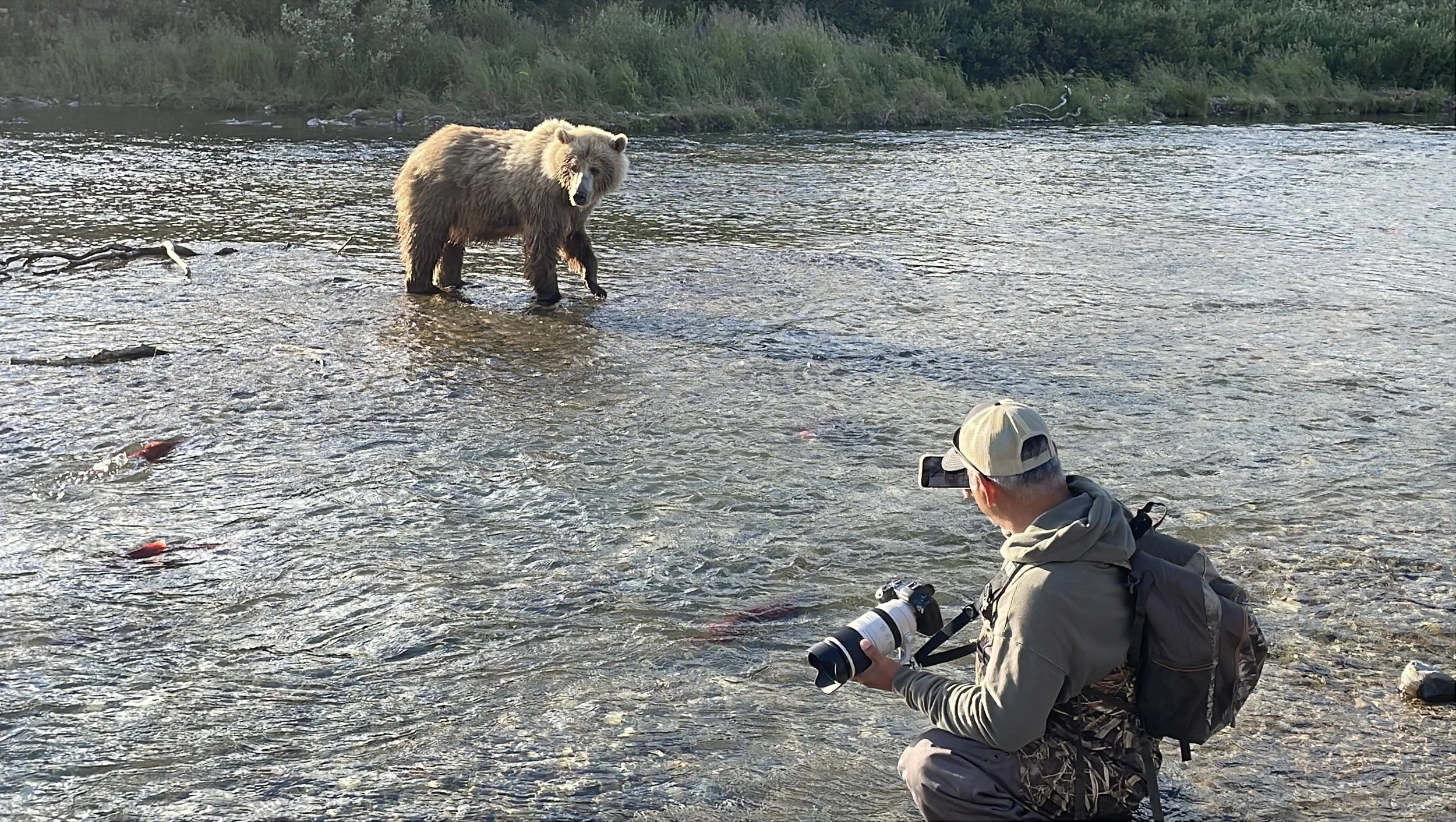This is Part 5 of a 10 part Natural Light Photography Series.
Orcas off Baja. 1/320, f9, ISO 800.
Aperture, or f-stop, is one of the most important settings in underwater photography.
It controls the amount of light entering your camera and determines your depth of field, the range of focus in your image.
For natural light photography, where light is limited and animals are constantly moving, understanding how to set your aperture is essential for creating sharp, well-composed shots.
My Go-To Aperture Settings
For most of my underwater photography, I stick to an aperture range of f/8 to f/11.
These settings provide enough depth of field to keep the entire subject, whether it’s a shark, whale, or dolphin, in focus, even when shooting wide-angle.
Why f/9 is My Preferred Setting:
It ensures critical features, like the eyes, remain sharp.
It gives enough depth of field to account for slight errors in focus, especially when shooting “blind” (holding the camera away from your body to get closer to the subject).
When to Adjust Aperture
Over/Under Shots:
Setting: f/11 to f/14 (or higher)
Why: For split shots capturing both underwater and above-water scenes, a smaller aperture ensures both planes are in focus.
Low-Light Conditions:
Setting: Open the aperture as wide as your lens allows (e.g., f/4 or f/2.8).
Why: In dim conditions, opening the aperture maximizes the light reaching your sensor, though this reduces depth of field.
Tiger Shark off Tiger Beach Bahamas, 1/320, f8, ISO 800
The Challenges of Big Animal Photography
When photographing large, fast-moving animals like sharks and whales, you sometimes can’t look through the viewfinder.
Instead, you’re shooting with your arms outstretched to get closer to your subject, a technique often referred to as “shooting blind.”
Every inch matters when using a wide-angle lens like an 8-15mm fisheye, as the best underwater images have minimal blue water between you and the animal.
By using a mid-range aperture like f/9, you can compensate for the challenges of shooting blind, ensuring that key features remain in focus even if your framing isn’t perfect.
A Safety Reminder
While getting close to your subject often leads to the best photos, always prioritize:
Your safety.
The well-being of the animal.
No image is ever worth compromising the trust and safety of wildlife.
Bonito off Baja feeding on a sardine baitball. 1/500, f9, ISO 800
Practical Tips for Using Aperture Underwater
Experiment with Depth of Field: Start with f/9 and adjust based on your subject and lighting conditions. For larger animals, a smaller aperture, f/11 can help ensure the entire subject is sharp.
Pair Aperture with Shutter Speed: Remember, changing your aperture affects the amount of light entering your camera, so adjust your shutter speed and ISO to maintain proper exposure.
Test Your Lens Limits: Practice with your lens to understand how it performs at different apertures. Wide-angle lenses are forgiving but still require attention to detail.
Whale Shark off Baja, Mexico. 1/320, f9, ISO 500
The Magic of Aperture in Natural Light
Aperture settings can make or break your underwater images.
With the right adjustments, you can achieve sharp, vibrant photos that showcase the beauty of the underwater world.
Whether you’re aiming for a detailed close-up of a shark’s eye or a dramatic over/under shot, understanding aperture is key to capturing the moment.
Coming Next
In the next blog, I’ll tackle ISO, a setting that can make or break your images in varying underwater conditions.
Learn how to balance light sensitivity and noise to achieve the perfect exposure. Stay tuned!
THIS IS PART 5 OF A 10 PART SERIES.
PART ONE - Is Natural Light Photography Photography For You?
PART TWO - The Euphotic Zone! Your best friend.
PART THREE - Custom White Balance, Natural Lights Secret Weapon.
PART FOUR - Shutter Speed: Freezing Moments Underwater.
PART FIVE - Aperture: Achieving Sharpness and Depth Underwater
PART SIX - ISO: Balancing Light Sensitivity Underwater
PART SEVEN - Focus Points: Keeping Your Subject Sharp Underwater
PART EIGHT - The Histogram: Your Underwater Photography Lifeline
PART NINE - Post-Processing: Bringing Your Underwater Images to Life.
PART TEN - The Freedom of Natural Light Photography: A Connection to the Wild



















